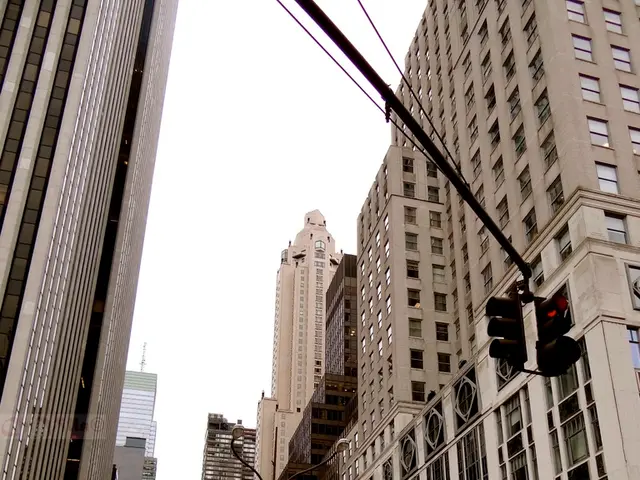African Mud Buildings: Blending Tradition and Sustainable Architecture
Venturing into Ancient Craftsmanship:
On the canvas of Africa's architectural heritage, mud architecture shines as a testament to resourcefulness, cultural heritage, and sustainable practices. This timeless craft not only situates us within historical continuity but also burnishes the credentials for environment-friendly construction.
Rooted in the Soil
From ancient times, mud architecture has adorned the African landscape with its natural, affordable beauty. Materials like earth, clay, and organic binders like straw or dung have been the building blocks, making this method accessible to numerous communities. In nations such as Mali, Nigeria, and Ghana, mud structures serve a dual purpose - catering to economic convenience while acting as a significant cultural statement.
The Art of Construction
The technique behind mud architecture encompasses the creation of adobe bricks and the application of mud in methods known as cob. Adobe bricks are produced by mixing earth, water, and organic materials, shaping the resulting mixture into bricks, and leaving them to dry under the sun. Cob construction, on the other hand, involves applying wet mud mixtures directly onto the structure. Another popular method is rammed earth, where mud and a minimal amount of lime or cement (for stabilization) are compacted in wooden forms to create strong walls.
Mud architecture's appeal derives from its remarkable capacity to regulate indoor temperatures. Thick mud walls insulate the interior effectively, keeping dwellings cool during the day and warm at night, eliminating the need for artificial heating or cooling in many regions.
Embracing Sustainability
From an ecological viewpoint, mud architecture is a strongly sustainable choice. Materials sourced locally result in lower carbon emissions and fewer transportation costs. Furthermore, mud being biodegradable and non-toxic, it imposes an insignificant burden on the environment compared to more conventional materials like concrete and steel. Additionally, mud construction preserves biodiversity, minimizing the need for tree felling, a common concern for timber construction. Moreover, mud structures can be easily repaired with local materials, contributing to lower waste production.
The Path Ahead
Although mud architecture boasts several advantages, it has its challenges, especially in the modern era. The misconception that mud buildings are inferior or less durable than modern materials can lead to a decline in traditional practices. However, the call for sustainable architecture is growing louder, reviving interest in this contextually sound method. Fusion of tradition with modern architectural design allows for the creation of buildings that are both aesthetically pleasing and environmentally responsible.
Case Studies of Note
Examples of mud architecture abound across Africa, some of which are recognized globally. Notably, the Great Mosque of Djenné in Mali epitomizes Sahelian mud architecture, characterized by size and intricate design elements like wooden toron spikes. Another remarkable example lies in the Musgum mud huts of Cameroon, distinguished by their conical shapes and ridged roofs.
Preserving Values, Cultivating Community
Mud architecture deeply impacts the local communities by fostering unity and cultural awareness. Building projects often involve the collective effort of several villagers, reinforcing bonds and igniting a sense of responsibility and pride towards community spaces. Moreover, the design and maintenance processes frequently rely on local traditions and wisdom, which is a crucial element of cultural identity in many African communities.
A Meeting of Tradition and Innovation
Innovations within mud architecture are emphasizing its relevance in the contemporary setting. Researchers are experimenting with methods to enhance water resistance in mud without compromising its breathability and eco-friendliness. Additionally, technology-driven tools like computer-aided design (CAD) software are revolutionizing the planning and construction process, making it possible to create complex, intricate designs that were challenging to achieve with conventional methods.
The Job Ahead: Preservation and Progress
Preservation of existing mud structures and incorporation of modern materials and techniques for durability represent significant challenges. However, these hurdles can be surmounted with a combination of passion, education, and advocacy. Supporting eco-friendly methods in regulatory frameworks can lead to more sustainable development, blending tradition, innovation, and preservation in a harmonious mix.
In the future, mud architecture has the potential to reignite the global conversation on sustainable development, blending the principles of the past with solutions for the future. This merging of old and new techniques not only ensures a nod to the past but also paves the way for an environmentally conscious and culturally rich future.
A glimmer of the past, a vision for the future:
Mud architecture in Africa stands as a kaleidoscope of cultural identity, community spirit, and environmental acumen. By modernizing and adapting these age-old techniques, communities can preserve their heritage, tackle contemporary environmental challenges, and contribute to a sustainable and culturally vibrant future.
- Preservation of cultural heritage blooms within African communities as they continue to embrace the timeless art of mud architecture, enriching their identity.
- The fusion of science and environmental-science in the field of mud architecture presents innovations, ensuring these structures remain water-resistant, breathable, and eco-friendly.
- The sustainable lifestyle promoted by mud architecture is rooted in the practice's inherent environmental benefits, such as reduced carbon emissions, biodegradability, and minimal impact on biodiversity.
- The realm of education-and-self-development can be enriched by the study and preservation of mud architecture, providing valuable insights into historical construction methods and their role in contemporary discussions on sustainable development.
- The impact of mud architecture extends beyond the realms of home-and-garden and travel, as it offers a creative foothold in the fashion-and-beauty and food-and-drink domains, showcasing culinary and cosmetic applications of natural, locally sourced materials.







